You are using an out of date browser. It may not display this or other websites correctly.
You should upgrade or use an alternative browser.
You should upgrade or use an alternative browser.
US Harper’s Bazaar November 2020 : Liya Kebede by Christopher Anderson
- Thread starter vogue28
- Start date
caioherrero
Well-Known Member
- Joined
- Sep 2, 2017
- Messages
- 3,052
- Reaction score
- 1,605
A model ❤️❤️
Serend1pity
Well-Known Member
- Joined
- Aug 21, 2020
- Messages
- 477
- Reaction score
- 827
I’ve missed Liya but I’m not liking this
caioherrero
Well-Known Member
- Joined
- Sep 2, 2017
- Messages
- 3,052
- Reaction score
- 1,605
Can’t wait for the redesign next year
D
Deleted member 1957
Guest
Beautiful composition but I dont like the expression at all.
Srdjan
Well-Known Member
- Joined
- Jan 11, 2012
- Messages
- 5,030
- Reaction score
- 1,550
Quite underwhelming, although it's unbelievable Liya would end up on HB US. They could have at least zoom her in or remove the nasty texts. An ''artistic'' image (why do magazine editors believe that if you use an uncropped photograph you did a great, finished job?!) does not work if you use a mainstream placement of texts.
tigerrouge
Well-Known Member
- Joined
- Feb 25, 2005
- Messages
- 18,995
- Reaction score
- 10,050
The face of a woman looking forward to a day off.
MON
Well-Known Member
- Joined
- Jun 20, 2009
- Messages
- 12,635
- Reaction score
- 5,190
A wasted potential. Powerful taglines ruined by a rather weak image.
A revolution indeed. She looks tired and over it.
Will reserve judgment until I see Samira's full vision. For now, all I'm seeing is US Harper's Bazaar looking like her European sisters. UK HB, an editor-less edition, remains supreme.
A revolution indeed. She looks tired and over it.
Will reserve judgment until I see Samira's full vision. For now, all I'm seeing is US Harper's Bazaar looking like her European sisters. UK HB, an editor-less edition, remains supreme.
KoV
The Fault in Our Czars
- Joined
- Sep 17, 2009
- Messages
- 6,441
- Reaction score
- 10,009
I know Glenda was commercial to a fault, but I’d hoped Samira wouldn’t steer it too far in the other direction. Keep the fantasy and the glamour, just refine it and choose better (or at least less repeat) cover subjects.
Glad she chose a model, at least. I was excited when I saw the thread title to see what they’d done with Liya but this is just boring and amateur. I certainly can’t imagine this selling on newsstands.
Glad she chose a model, at least. I was excited when I saw the thread title to see what they’d done with Liya but this is just boring and amateur. I certainly can’t imagine this selling on newsstands.
LastNight
Well-Known Member
- Joined
- Nov 11, 2013
- Messages
- 860
- Reaction score
- 1,023
Thrilled to see Liya, she's one of my all time favourites. Not a huge fan of the shot though - that vivid yellow is beautiful, but the whole thing feels somewhat unfinished and not cover-worthy, even just cropping it correctly would help a little.
I wish Liya looked happy to be there; I'm really missing the joy in fashion these days and this would have been a great opportunity to do something really buoyant and optimistic: that yellow backdrop in combination with Liya's gorgeous smile, and a stronger pose, would have been fantastic!
Also I'm really disappointed to see there hasn't been a redesign. I was looking forward to a fresh new look for US Harper's Bazaar, but it just looks like a cover of one of the European editions. I'm craving a magazine that really nails the balance of art and commerce; there are so many attempts at unconventional cover images these days but they rarely work for me. I'd love someone to come along and really embrace a commercial approach but in an elevated and sophisticated way - hopefully Samira will do that, and I'm looking forward to seeing how the magazine develops over the next few months.
I wish Liya looked happy to be there; I'm really missing the joy in fashion these days and this would have been a great opportunity to do something really buoyant and optimistic: that yellow backdrop in combination with Liya's gorgeous smile, and a stronger pose, would have been fantastic!
Also I'm really disappointed to see there hasn't been a redesign. I was looking forward to a fresh new look for US Harper's Bazaar, but it just looks like a cover of one of the European editions. I'm craving a magazine that really nails the balance of art and commerce; there are so many attempts at unconventional cover images these days but they rarely work for me. I'd love someone to come along and really embrace a commercial approach but in an elevated and sophisticated way - hopefully Samira will do that, and I'm looking forward to seeing how the magazine develops over the next few months.
GivenchyAddict
Well-Known Member
- Joined
- Feb 5, 2012
- Messages
- 2,547
- Reaction score
- 7,077
Her expression is off. Her hair is a mess and the styling is uneventful. It could have been nice. Liya's smile could have been a huge asset to this new era for HB and would match this very joyful color in the background.
A better posture would have changed a lot the whole image. Her body looks ill whereas it is not. A miss for me.
A better posture would have changed a lot the whole image. Her body looks ill whereas it is not. A miss for me.
Last edited:
Lola701
Well-Known Member
- Joined
- Oct 27, 2014
- Messages
- 14,221
- Reaction score
- 38,686
Love Liya as always but wish she looked happier...
This is such a depressing and sad looking cover. Considering that this will come around US Election time, it's really the most optimistic portrayal of "America" I guess. But I love the risk!
We have 2 models on the cover of the 2 major US Fashion magazines. It's kinda exceptional!
This is such a depressing and sad looking cover. Considering that this will come around US Election time, it's really the most optimistic portrayal of "America" I guess. But I love the risk!
We have 2 models on the cover of the 2 major US Fashion magazines. It's kinda exceptional!
mikel
Well-Known Member
- Joined
- Sep 30, 2005
- Messages
- 26,887
- Reaction score
- 6,249
Not to mention 2 models of colours. That’s indeed exceptional!We have 2 models on the cover of the 2 major US Fashion magazines. It's kinda exceptional!
Lola701
Well-Known Member
- Joined
- Oct 27, 2014
- Messages
- 14,221
- Reaction score
- 38,686
I think that before Naomi, Liya was the last black model to get a solo cover...Not to mention 2 models of colours. That’s indeed exceptional!
And I don't remember seeing a solo cover with a black girl since Tyra in the late 00's.
Miss Dalloway
Well-Known Member
- Joined
- Mar 3, 2006
- Messages
- 25,698
- Reaction score
- 1,006
Oh how beautiful, actually excited for Samira's HB.
MagFan
Well-Known Member
- Joined
- May 16, 2006
- Messages
- 4,442
- Reaction score
- 2,088
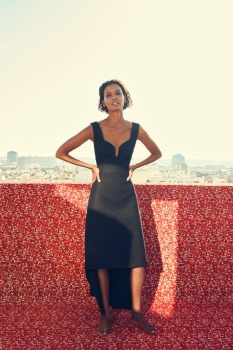
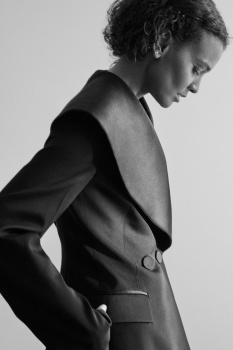

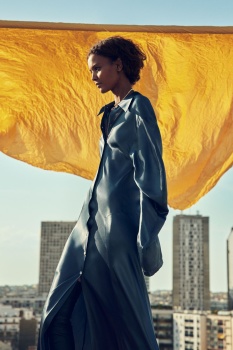

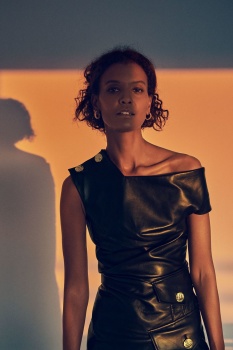

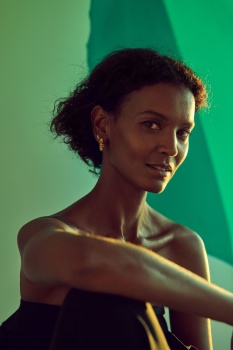
The Staying Power of Liya Kebede
Fashion didn’t change for Liya Kebede, but Liya Kebede helped change fashion. Here, the 42-year-old model, entrepreneur, and advocate opens up about finding the strength that has fueled her two-decade career.
Paris, via Zoom. Liya Kebede is sitting at a desk in a room where, behind her a wall of dark wood shelves displays a few framed photographs, papers, books. She refers to this room as "just an office that I use." As for so many of us, I interpret her answer as an effect of this year, the prolonged temporariness of working and living and living and working from home. Any surface has become the desk. Still, even on Zoom, Kebede is very much a model at home—the veneer of commonality suspended by her crisp white shirt. A button-down with a laissez-faire collar, loose exactly where it ought to be. It's the sort of shirt one buys hoping it will look the way it looks on Kebede but never does. In this era of influencer models, it seems strange to even use the words "off-duty model," but Kebede exemplifies that expression with her white shirt; how specific and from another time anything starched seems now.
How are you? I ask. Kebede laughs. “What kind of question is that? It’s been an insane year. We’re all just trying to adjust. It’s very uncertain.” She pauses to add that as a model, uncertainty, to a lesser extent, is standard. “The whole fashion business is like that. You’re in this uncertain bubble. You get used to [it] because you don’t know when the next job is going to come, where it’s going to come from, when it is. You’re kind of just hanging around, and then someone calls.”
It’s hard to imagine Kebede waiting around for her next gig—the significance of her career creates an illusion of ease, when in fact demand was a consequence of grit, tenacity under extreme pressure, and feeling most days like an outsider without a voice, she says. “You’re always going to a team that’s there, and you’re the one that comes in and out. It’s hard to create a community of any kind. The photographer has a voice. The stylist has a voice. The creative director has a voice. You’re just the executor. Toward the beginning, I experienced some really strange things. Just because I was Black. [There was] awkwardness on set, complications on set. And there's nothing you can do. You just keep quiet. You do your thing. Then you leave and hope for the best."
Hers is a career and lastingness, the familiarity of a Face. To Liya Kebede, we attribute key "moments," like the sleek plunging provocativeness of Tom Ford's Gucci or Nicolas Ghesquière's Balenciaga revival, or Gap's boyfriend trousers, or more recently, a collaboration with Pierpaolo Piccioli on a collection of candy-colored operatic puffers for Moncler. It's perhaps why some editors have characterized Kebede's career as evergreen, attaching personal nostalgias of the business to her likeness. The girl who Vogue Paris devoted an entire issue to nearly 20 years ago. And soon after, in 2003, a contract with Estée Lauder—Kebede was then the only Black woman to serve as their representative in the company's 57-year history. More work followed. The synthetic frills of Victoria's Secret pageantry. The beautiful backstage chaos of an early Marc Jacobs show. The world, long before "likes," when influence wasn't a matter of documentation necessarily, and when the runways and magazines were plainly so white.
The phrase “staying power” is generally antithetical to a model’s career. The industry is designed to age women out. Longevity is an unorthodox concept, and diversity and representation are often faddish pursuits unless approached holistically, radically, in front of and behind the camera, on runways and on mastheads. More so, change requires real support that works in service of long-term change, both incremental and visionary, and beyond the feverish rush to fix when faced with a wave of reckonings. To stay is to surf these waves, something Kebede excels at. “Not many people in our professional environment are able to listen, observe, and feel the way she does,” writes Piccioli over e-mail. “Her beauty communicates with the world through a natural channel, always preserving the power of thought over image. People like us prefer the pleasure of a good chat [over] parties. Big egos don’t last as long as a true friendship like ours.”
Kebede’s impact and rootedness in the mainstream can be attributed to her range and multiplicity. An early-aughts Tommy Hilfiger ad might have included rugby stripes, dock furniture, golden hour, Carmen Kass, and Liya. In another Gap ad, Kebede is dressed like Audrey Hepburn in the jazz club scene in Stanley Donen’s Funny Face, the 1950s musical about a reluctant model. The ad reads, KEEP IT CLEAN, with Kebede issuing a mix of Hepburn’s incandescence and Janelle Monáe’s dapper, easy style. In 2006, for Estée Lauder, Kebede stood beside a white horse, the words “Mythical Beauty” accompanying both model’s and mare’s stares.
She has walked for everyone and been photographed by everyone, and been called “exotic” and “ethnic” too many times to count. She’s worn Louis Vuitton and Alberta Ferretti on the red carpet at Cannes and in Venice, having crossed over to screen on occasion. She’s portrayed the romantic intimacy of a family with Jake Gyllenhaal for Calvin Klein Eternity, done the gingham-blazer-madras-shirt thing for Jenna Lyons’s J.Crew, and worn, for years now, the multi-hyphenate title of maternal health advocate and entrepreneur (of her own company, Lemlem, a clothing line she founded in 2007 to support women artisans and protect traditional Ethiopian weaving techniques).
“She was really going against the grain of where runway models had gone,” says Robin Givhan, senior critic-at-large at The Washington Post. “There was Iman, and then there was Naomi Campbell, and then there was Liya. I think the question is, Was Liya the beginning of an end to this idea of ‘the only one’ and diversity being a trend?” She adds,“Diversity lasts when it no longer has to be the subject of a story.”
It’s rare that someone in Kebede’s profession can occupy both the memory of an iconic catwalk—the pinnacle of glamour and of that time—while continuing to model, at 42. The remarkability of having evaded “comeback” runway appearances; the preternatural grace of having been selective. Over the phone, I ask the advocate and legendary former model Bethann Hardison, who first met Kebede through Kyle Hagler, her agent at the time, if there’s ever been anyone like her in the industry. “No one. No one,” she says. “I used to call her a Renaissance woman. I remember seeing her in an editorial and not appreciating her look. Then someone finally found the way to take the proper picture of her, and I said, ‘Now, here we go.’”
Kebede was born on March 1, 1978, in Addis Ababa. Her upbringing in Ethiopia’s capital city was solidly middle-class: Her mother worked in public relations, and her father held a managerial position for Ethiopian Airlines. “I’m number four,” she tells me, referring to herself sequentially. “Five kids; I’m the only girl.” Her family lived in a house with a little garden and dogs. Hanging on Kebede’s bedroom wall was a poster of Naomi Campbell. “Things were simpler, for sure, and easier,” she says. “My father was pretty strict about school.” Kebede remembers how her everyday routine was conditioned by academics: return from school, snack, homework until it was time to sleep. “For my dad, nothing was possible without an education. It was really important to him.” She and her younger brother attended the Lycée Guebre-Mariam, where Kebede preferred writing over math, and thought of pursuing journalism or teaching, or becoming a flight attendant. “I was not a happy teen,” she says. “I was quite solitary; I had few friends. I was very bookish. I was one of those kids who always felt misunderstood. My plan was to go to university, and I guess somehow I shifted along the way."
It was her cheekbones that first caught Tom Ford's attention, all those years ago, during his Gucci years. Or so it's been said. The accounts differ depending on whom you ask or read, but exactly how Liya Kebede became—and has remained—a model with perennial appeal, represents a mini telling of the industry's recent past, pre-social media. In the late '90s, the business of magazines endorsed our culture's obsession with celebrity, replacing Kate, Shalom, Linda, and Naomi with Jennifer Aniston, Gwyneth Paltrow, Charlize Theron, and so on. Kebede entered on the occasion of this shift and has stayed in spite of it—and scores other shifts, critical reckonings, and fashion-family breakups.
“I found Liya’s card at Elite Chicago. I was like, ‘Who is this girl, and why is she sitting in Chicago? I need to meet her,’” James Scully, the veteran casting director, who is no longer in the business, says to me over the phone. Which he did. “I totally freaked out.” This was then 1999 or 2000, by Scully’s estimation. This was Polaroids and FedEx and waiting three days for a response from Tom Ford, who Scully had called to say he had met the most incredible girl. “I was like [to Ford],‘I don’t know if she’s Ethiopian or Indian or Native American.’” She reminded him of the ’70s, of a Halston girl.
A few days elapsed, and Scully received a call from Ford: “Book her exclusive.” Kebede’s agency wasn’t very forthcoming about getting her to Milan, so she flew herself there. She walked the Fall 2000 Gucci show, and the after effects were nothing short of vibrational. Kebede caught the attention of every editor. “The buzz was immediate,” says Scully.
“Tom had that power,” says Kebede. “There have been people in the industry who had this kind of power, where whoever they discovered they just put on the stage. Then you start really working.” In addition to choosing Kebede to walk the Gucci runway, Ford, who was also helming Yves Saint Laurent, chose her for the house’s upcoming Rive Gauche campaign, shot by Steven Meisel. There she was, in purple, this new regality. Standing with her back mostly to the camera, Kebede's coming out was more of a contour. "The rest is history," says Scully. "It was that fast when it happened."
"From Steven I learned everything about modeling," Kebede says. "I learned how to be in front of the camera. It's the way he positions a set, or where he positions you," she says. "There are a lot of photographers who will just bring their camera and say, 'Okay, go.' And you're like, 'Uh, okay.' [Steven] would put a mirror in front of us, in front of the girls. We learned a lot from that."
The girls. When Kebede refers to “the girls,” Jennifer Egan’s classic 1996 New York Times Magazine profile of then model Jaime King titled, “James is a girl,” comes to mind. In it, Egan writes, “In the fashion world, models are always ‘girls.’...Backstage at a show or at a shooting in a loft, ‘girl’ suggests, as it is meant to, someone more beautiful and less complicated than a woman.” Kebede, I imagine, never totally suited this profile. She lived with her brothers in Chicago instead of a small, crowded apartment with other “girls.” She married young. “I moved to New York with my then husband, my ex-husband. I was, like, 21 or something. 20? Very quickly I had my son. I had a family life very early on.” Kebede pauses and then smiles. She remarks how her son is the same age as her modeling career. “I was pregnant on my first real show, which is kind of crazy. Nobody knew. I was throwing up every two seconds in the bathroom. I was so sick and somehow managed to walk that stage. It was hilarious.” Compared with the other “girls,” Kebede wasn’t alone, in the sense that she could always go home after a long day to her kids (she has a daughter too) and her family. “It’s very lonely for many, many girls. It’s a tough job. You’re pulled in all directions. And there’s a glamour to it, but there’s also a lot of...not glamour. I think having a family helped me a lot. It anchored me. You get so tired after doing New York, then London, then Milan and Paris. Everyone’s sick by that time. Everybody’s got the flu. It goes on [like this], and you come undone. So it was nice to go home after that and be like, ‘Oh, my God, I have a family.’ I just cocooned.”
That said, Kebede doesn’t dwell on the past. “I’m melancholic,” she notes, “but I don’t know if I’m nostalgic.” When I ask her about those history-making moments in her career, the Estée Lauder contract and countless other exclusives, she’s matter-of-fact. “I shouldn’t be the first, you know what I mean? Why is it now? It’s like you guys are so far behind. Sometimes it was just a trend, sometimes it’s not.” Hardison, who tells me that she and Kebede never see eye to eye (“We’re family, but at the end of the day we just don’t agree on anything”), doesn’t buy into that thinking. “I get so annoyed with things like that,”she says, conceding that her opinion might be generational. “As someone who’s a revolutionary, growing up in an industry, a garment business primarily, I don’t look at it like, ‘Why did it take so long?’ When we decide to penetrate it, that’s when it’s time. All this talk about what it was, could’ve, would’ve, should’ve, I think it’s just a waste of good sense.”
While a cursory look at Kebede’s career might reflect the many tensions of her industry or seem to map parts of its meaningful change, she knows not to carry those pressures or be identified by them. As this year has taught us, the heaviness lies elsewhere. The real work shouldn’t depend only on how things look but how unyieldingly this moment—different from fashion’s use of moment—is met. How a year as unequaled as this one cracks us further open to pain and doubt. Near the end of our call, Kebede climbs out of her seat to turn on a light. The sun is setting in Paris. “I don’t know, I don’t know,” she says, as she returns to the screen. “Hope is hard sometimes. But deep down I have it. I think [this year] we’ve all learned to be okay with not knowing. We’re all living in this I-don’t-know world, you know?”
harpersbazaar.com
Similar Threads
- Replies
- 24
- Views
- 6K
- Replies
- 7
- Views
- 4K
- Replies
- 8
- Views
- 2K
- Replies
- 9
- Views
- 2K
Users who are viewing this thread
Total: 1 (members: 0, guests: 1)
New Posts
-
Vogue Singapore January/February 2026 : Yerin Ha by Peter Ash Lee (6 Viewers)
- Latest: grimesisnotmymother
-
-
-
-
